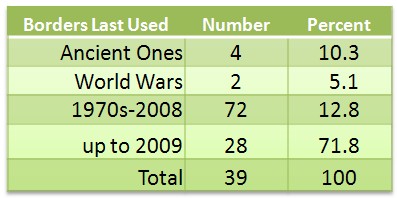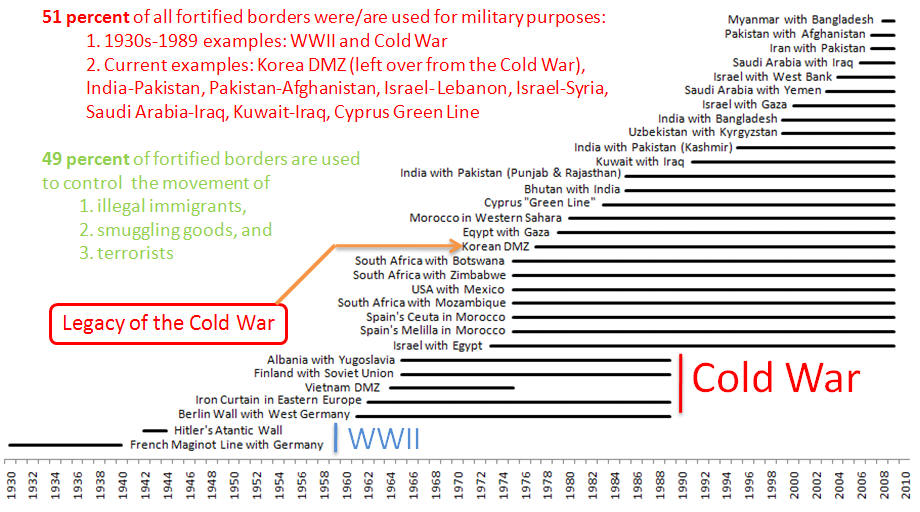Ingolf Vogeler, Types of
International Borders
along the U.S.-Mexico Border
The study of borders relates to nation-state formations and the relationship to surrounding ethnic and cultural groups and their territorial claims to similar places and regions. Politics are expressed in places. Literally, national and international politics are written on the landscape. National political territorialities with neighboring governments are expressed geographically along the edges of nation-states. Political geography is about state power, reflected in ever-changing political maps of struggles over space, authority, and borders.
Most commonly, borders
today are sometimes symbolic with widely dispersed concrete markers,
such as on the U.S.-Canada line, or the non-existing borders between the
countries of the European Union. International borders are usually lines
between “self-evident” states, such as Canada and the United States, or
Denmark and Germany, whose existence are presumed to reflect physical
features, historical events, or international treaties. In the past,
fortified international borders, such as the Roman and Chinese empires,
identified and delineated “barbarians” and restricted them to beyond
“civilized” places. The Cold War
in Eastern Europe and the Korean peninsula
created another set of conditions and different kinds of borders.
They were used for the first time to
keep national populations within, rather than out of, particular
nation-states. Perceived or actual
illegalities, and e ven hostilities, beyond borders frequently lead to
fortified and even militarized
international borders, e.g., the highly
fortified U.S.-Mexican one.
ven hostilities, beyond borders frequently lead to
fortified and even militarized
international borders, e.g., the highly
fortified U.S.-Mexican one.
The most recent forms of globalization,
particularly international terrorism, drug trafficking, and illegal
immigration, have again challenged state power within and at the edges
of their control, increasing the number of fortified borders, in their
various forms, world-wide.
Information for
fortified international
borders was collected
from various print and web sources.
Forty-two
fortified borders, past and present, were identified.
Only 15 percent of fortified borders
existed in Ancient Tines and until the end of the Cold War. Fortified
borders during the mid-1970s to 2008, accounting for 13 percent all such
borders.
A staggering 72 percent of all fortified borders exist today!
Detailed
results are shown in the table and the graph:
